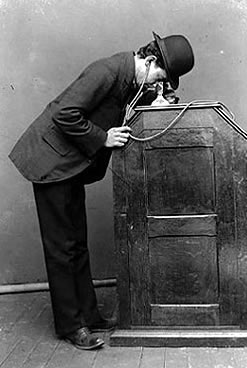Unit 59 Stop Motion Animation Karolina
Wednesday, 1 October 2014
Frame rate
The measure of the number of frames displayed sequentially per second of animation in order to create the illusion of motion. The higher the frame rate, the smoother the motion, because there are more frames per second to display the transition from point A to point B.
Wednesday, 24 September 2014
Stop Frame ( freeze )

Friday, 12 September 2014
Lumiere Brothers
The Lumière brothers

The Lumière brothers were born in Besançon,
France, in 1862 and 1864.
They patented a number of significant
processes leading up to their film camera - most known for their film perforations as a means of advancing the film
through the camera and projector. The cinématographe was patented on 13 February 1895 and the first footage ever to be
recorded using it was recorded on 19 March 1895. This first film shows workers leaving the Lumière factory.
Thursday, 11 September 2014
Thomas Edison
Thomas Edison
Edison originally got his idea for the
patent of the kintoscope on
October 17, 1888, saying that he would make a machine that could record
and reproduce objects in movement.
The design for the kinetoscope was made of a closed
cabinet in which the film was spooled. To operate the
machine, the user opened the top and looked through
a small hole, and as the film was moved across a series
of rollers, a backlight would lighten it, creating the illusion of a moving picture, as long as the film was rotated at the correct speed. When the kinetoscope was first shown to the public in 1894, it became a big hit.
Wednesday, 10 September 2014
Eadweard Muybridge
Eadweard Muybridge
Muybridge was an eccentric English
inventor/photographer, who became known to the world as a leading pioneer in
motion photography. He became renowned for his work on animal locomotion, which
involved using multiple cameras to capture motion in stop action photography.
Muybridge produced at the time ground breaking photographs where he developed a
miraculous process for capturing movement on film, which in turn laid the
groundwork for the motion picture industry.
Emilie Raynaud
Emilie Raynaud
The Praxinoscope was the first invention of Émile Reynaud in 1876.
Patented in 1877, it's a toy giving the optical illusion of movement.
It used a drum, just as the zoetrope had, with the images drawn on
a band placed around the inside of the cylinder.
But rather than having slits through which the images were watched,
the cartoon strip was reflected in a series of mirrors, mounted in a ring set
halfway between the outer edge of the drum and the central axle .When the drum
was spinning, the viewer watched the progression of images in the mirrors. A
candle was set above the axle allowed the images to be seen more clearly.
Subscribe to:
Comments (Atom)

